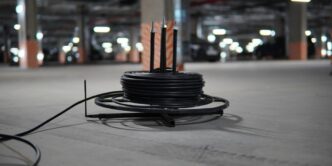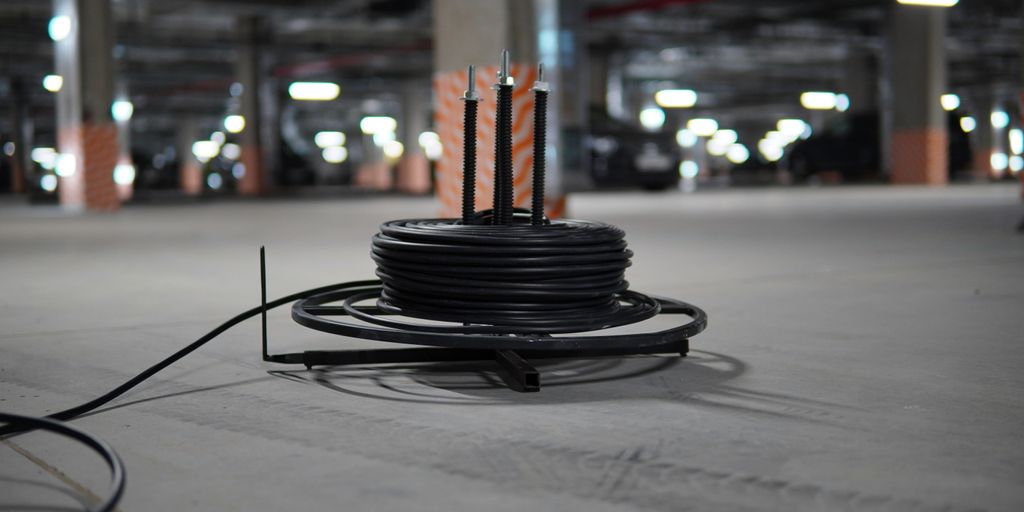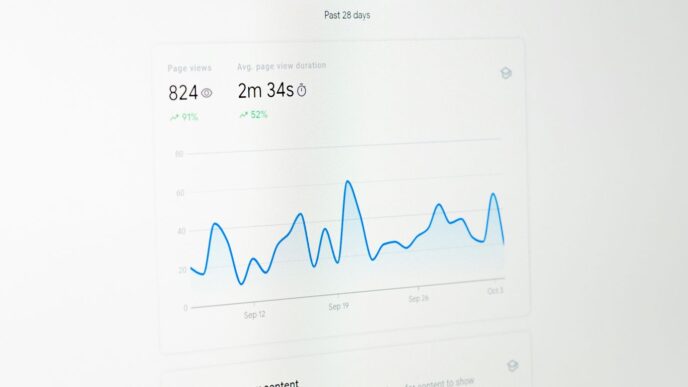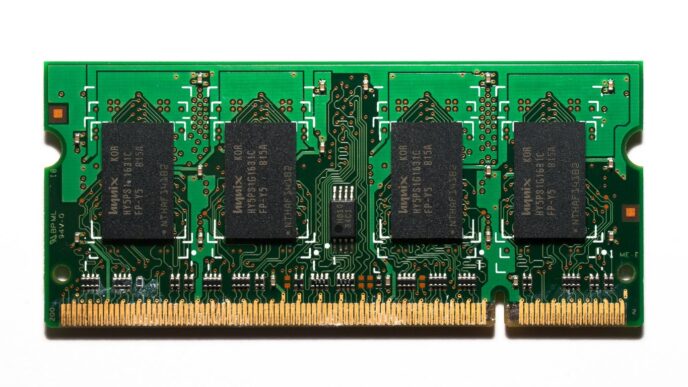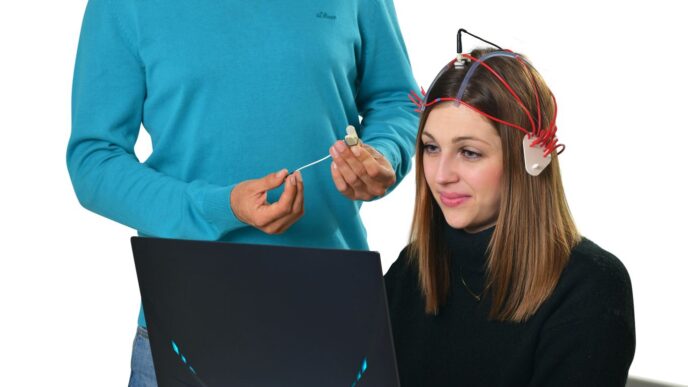It feels like our devices are always running out of juice at the worst possible time. Nobody wants to wait around for hours for their phone or tablet to charge up. Luckily, in 2025, there are tons of great options to get your gadgets powered up super fast. We’ve checked out the best fast charging solutions out there, so you can spend less time plugged in and more time doing what you want. Let’s find the best fast charging setup for you!
Key Takeaways
- MagSafe is great for Apple users who want speedy wireless charging.
- USB-C Power Delivery chargers work for many different devices, including Android phones and laptops.
- A good quality USB-C cable is just as important as the charger itself for fast speeds.
- Portable chargers and power banks are super handy for charging on the go.
- A 30W charging brick is a solid choice for powering up most modern devices quickly.
1. Apple MagSafe Charger

Apple’s MagSafe Charger has become a popular choice for iPhone users, and for good reason. It’s sleek, convenient, and offers a relatively fast wireless charging experience. The latest models are even better, pushing the boundaries of wireless charging speeds.
The newest MagSafe charger, released in 2024, represents a significant upgrade in charging speed. When paired with a 30W charging brick, it can deliver up to 25W of wireless power to your iPhone. That’s the fastest wireless charging speed ever for iPhones! It also supports Qi2 charging at 15W and standard Qi charging at 7.5W. The magnetic attachment ensures perfect alignment, which is key for efficient charging. If you’re looking to transfer files from an Android device to a Mac, you might appreciate the simplicity of MagSafe for charging your iPhone.
While it’s designed primarily for iPhones, Apple Watches, and AirPods, using it with other devices can be a bit hit-or-miss. Plus, compared to some higher-end wireless chargers, the MagSafe’s 7.3 watts output can feel a little slow. Still, for a single iPhone, it’s a compact and efficient option, especially when traveling. The minimalistic design is a plus, too. It looks great on a desk or nightstand. However, it’s worth noting that using your phone while it’s charging on the MagSafe can be a bit awkward.
2. USB-C Power Delivery Charger
USB-C Power Delivery (PD) chargers are where it’s at if you want to juice up your devices quickly. I remember when I first got a phone with USB-C PD, it was like magic. No more waiting forever for my battery to crawl to 100%. These chargers negotiate with your device to deliver the optimal amount of power, safely and efficiently.
Here’s why they’re so great:
- Faster Charging: They can deliver much more power than standard USB chargers, significantly reducing charging times.
- Versatility: One charger can power a range of devices, from phones to laptops. It’s super convenient for travel.
- Safety: The intelligent negotiation prevents overcharging and overheating, protecting your device’s battery. I’ve definitely fried a few batteries in my day using the wrong charger, so this is a big plus.
I’ve been using a USB-C laptop charger for everything lately, and it’s been a game-changer. I can even use it to charge my Nintendo Switch! It’s so much better than having a million different chargers cluttering up my desk. Plus, the fast charging is a lifesaver when I’m running late and need a quick power boost. I’d recommend everyone switch to USB-C PD if they haven’t already.
3. USB-C Cable
Okay, so you’ve got your fancy fast charger, but are you using the right cable? It’s easy to overlook, but the cable plays a HUGE role in how quickly your device charges. A cheap or outdated cable can seriously bottleneck the power flow, negating the benefits of your high-wattage charger. I learned this the hard way when I bought a ‘fast charging’ cable from a gas station and it charged my phone slower than my old one!
The quality of the USB-C cable directly impacts charging speed.
Think of it like this: you wouldn’t try to run a marathon in flip-flops, right? Same deal with charging. You need a cable that’s built to handle the power. Look for cables that specifically advertise support for fast charging protocols like USB Power Delivery (USB-PD). These cables are designed with thicker wires and better shielding to handle higher currents without frying themselves (or your device!).
Here’s what to keep in mind when choosing a USB-C cable for fast charging:
- Check the wattage rating: Make sure the cable can handle the wattage of your charger. A 60W cable won’t cut it if you’re using a 100W charger. It’s like trying to fit an elephant through a doggy door.
- Look for USB-PD support: This ensures compatibility with fast charging standards.
- Consider cable length: Longer cables can sometimes result in slightly slower charging speeds due to increased resistance, but honestly, for most people, the convenience of a longer cable outweighs the minimal speed difference. I personally prefer a longer cable so I can comfortably use my phone while it’s charging.
- Durability matters: A flimsy cable will break easily, costing you more in the long run. Look for braided cables or those with reinforced connectors. I’ve gone through way too many cheap cables that broke after just a few weeks. Now I always buy braided ones.
Speaking of good cables, I recently picked up a USB-C laptop charger that’s been a game-changer. It’s a small investment that makes a big difference in charging speed and overall convenience.
4. USB Phone Charger
Okay, so you’re probably thinking, "USB phone charger? Isn’t that, like, everything these days?" And you’re not wrong. But the world of USB charging has gotten surprisingly complex. It’s not just about plugging your phone into any old port anymore. We’re talking about fast charging, power delivery, and making sure you’re not frying your battery with the wrong voltage. I remember when I thought all chargers were created equal. Boy, was I wrong!
The right USB phone charger can seriously cut down on your charging time.
Let’s break down what to look for in a good USB phone charger in 2025:
- Power Output: This is key. Look for chargers that support the charging standard your phone uses (like USB-PD or Quick Charge). More watts generally means faster charging, but make sure your phone can handle it. You don’t want to damage your battery by overdoing it.
- Number of Ports: Do you just need to charge your phone, or do you also want to charge your smartwatch and earbuds at the same time? Consider a multi-port charger if you’re a gadget person.
- Safety Features: Over-voltage protection, over-current protection, and short-circuit protection are all important. You don’t want a cheap charger to fry your expensive phone. I’ve seen it happen, and it’s not pretty.
Here’s a quick comparison of some popular USB phone charger types:
| Charger Type | Pros | Cons |
|---|---|---|
| Single-Port USB-C PD | Fastest charging for compatible devices | Only charges one device at a time |
| Multi-Port USB-C/USB-A | Can charge multiple devices simultaneously | Charging speed may be slower when charging multiple devices at once |
| Wireless Charging Pad | Convenient for overnight charging; no cables needed | Generally slower than wired charging; can generate heat |
So, before you grab that random charger from the back of your drawer, take a minute to think about what you really need. A little research can go a long way in keeping your devices charged quickly and safely. I’ve been using a 30W charging brick lately, and it’s been a game-changer for my phone’s battery life.
5. Portable Chargers
Okay, so you’re out and about, and your phone’s battery is flashing that dreaded low-battery warning. That’s where portable chargers come in handy. These aren’t your grandma’s bulky battery packs anymore. They’re smaller, more powerful, and some even have cool features like wireless charging.
A good portable charger can be a lifesaver when you’re traveling, camping, or just stuck somewhere without an outlet. I remember one time I was at a music festival, and my phone died halfway through my favorite band’s set. Luckily, I had a portable charger in my bag, and I was able to keep snapping pics and videos.
When you’re picking one out, think about a few things:
- Capacity: How much juice can it hold? Measured in mAh (milliamp hours), a higher number means more charges for your devices. If you’re just topping off your phone, a smaller one will do. But if you need to charge multiple devices or want several full charges, go for something bigger.
- Size and Weight: You’re going to be carrying this thing around, so you don’t want it to be too heavy or bulky. There are some super slim and light options out there now.
- Ports: How many devices can you charge at once? Does it have USB-C? Make sure it has the ports you need for your devices. Also, consider the charging cables you’ll need.
- Charging Speed: Some portable chargers support fast charging, which can save you a lot of time. Look for ones that support USB-C Power Delivery or Quick Charge.
I’ve been testing out a few different models lately, and I’m really impressed with how far they’ve come. Some even have built-in cables, so you don’t have to worry about carrying extra cords. Pretty neat, huh?
6. Power Banks

Power banks are still super relevant in 2025, especially with our phones doing more and more, which drains the battery faster. It’s not just phones, either; tablets, headphones, and even some newer handheld gaming devices can get a boost from a good power bank. The key is finding one that balances capacity, size, and charging speed.
I’ve been using power banks for years, and they’ve saved me countless times when I’m traveling or just out and about. I remember one time my phone died right before I needed to use it for navigation, and thankfully, I had a power bank in my bag. It was a lifesaver!
When choosing a power bank, here are a few things to consider:
- Capacity: Measured in mAh (milliampere-hours), this determines how many times you can charge your device. A 10,000mAh power bank can typically charge a phone with a 5,000mAh battery about twice. If you have a device with a large battery, you might want to consider a power bank with a higher capacity.
- Charging Speed: Look for power banks that support fast charging technologies like USB-C Power Delivery. This will significantly reduce the time it takes to charge your devices. Also, consider the input charging speed, so you can quickly recharge the power bank itself.
- Size and Weight: If you plan to carry the power bank with you regularly, you’ll want something that’s compact and lightweight. There are some great options that offer a good balance between capacity and portability.
- Ports: Check the number and type of ports available. Some power banks have multiple USB-A ports, while others have USB-C ports. Some even have both. Make sure it has the ports you need for your devices.
Anker and Iniu are two brands that consistently get good reviews. Anker is known for its reliable performance and wide range of products, while Iniu offers great value for the price. I’ve personally had good experiences with both brands. Speaking of which, the electric car charger columns market is also booming, so it’s a good time to invest in charging solutions.
Here’s a quick comparison of some popular power bank models:
| Model | Capacity (mAh) | Charging Speed | Ports | Size | Weight |
|---|---|---|---|---|---|
| Anker Prime 27,650mAh | 27,650 | 250W | 2x USB-C, 1x USB-A | Large | Heavy |
| Iniu PD 22.5W 20000mAh | 20,000 | 22.5W | 1x USB-C, 2x USB-A | Medium | Medium |
| Anker Nano | 5,000 | 12W | 1x USB-C | Small | Light |
Power banks are an essential accessory for anyone who relies on their devices throughout the day. With the right power bank, you can stay charged and connected, no matter where you are.
7. 30W Charging Brick
30W charging bricks have become super common, and for good reason. They’re like the sweet spot for charging a lot of devices quickly without being too bulky or expensive. You can use them for your phone, tablet, and even some laptops. It’s a pretty versatile option to have around.
A good 30W charger will juice up your devices way faster than those old 5W chargers we used to get.
I remember when I upgraded to a 30W brick, it was a total game changer. My phone went from zero to 50% in like, half an hour. It’s especially useful when you’re in a hurry and need a quick power boost. Plus, they’re usually pretty compact, so they don’t take up too much space in your bag or on your power strip.
Speaking of options, there are tons of 30W chargers out there. Some have multiple ports, which is great if you need to charge more than one thing at once. Others are super small and perfect for travel. You can even find some with cool features like built-in surge protection. If you’re looking for a Belkin BoostCharge, that’s a great option.
Here’s a quick rundown of why I think a 30W charging brick is a must-have:
- Fast charging for phones and tablets
- Versatile for various devices
- Compact and portable
- Affordable
Honestly, if you’re still using an old charger, upgrading to a 30W brick is one of the best things you can do for your devices. It’ll save you time and make your life a whole lot easier.
Wrapping It Up
So, there you have it. Picking the right fast charger for your stuff in 2025 doesn’t have to be a headache. It’s really about figuring out what you need and then grabbing a charger that fits. Whether you’re always on the go or just want your phone to charge up super quick at home, there’s a good option out there. Just remember, a little bit of research goes a long way to keep your gadgets powered up and ready to roll.
Frequently Asked Questions
What exactly is fast charging?
Fast charging lets your devices, like phones and tablets, get a lot of battery power in a short amount of time. Instead of waiting hours, you can often get a significant charge in just 30 minutes. It’s super handy when you’re in a hurry.
Do all devices support fast charging?
Most new phones, especially those released in the last few years, can handle fast charging. For example, iPhones from the iPhone 8 and newer, and many Android phones, are built for it. You’ll usually need a special charger and cable to make it work.
What do I need to fast charge my device?
To fast charge, you typically need three things: a device that supports fast charging, a fast charging adapter (the part that plugs into the wall), and a compatible cable. For iPhones, this often means a USB-C to Lightning cable and a USB-C power adapter.
Will fast charging damage my device’s battery?
No, using a fast charger won’t hurt your device’s battery. Modern devices and chargers have smart technology that protects the battery from getting too much power. They communicate to make sure the charging speed is safe and efficient.
Are all USB-C cables good for fast charging?
Not all USB-C cables are the same. While many can transfer data, for fast charging, you need a cable that’s designed to handle higher power levels. It’s always best to use the cable that came with your fast charger or one from a trusted brand.
What’s the best wattage for a fast charger?
It depends on your device. For iPhones, a 20W or 30W charger is usually enough to get the fastest speeds. For some laptops or larger devices, you might need a charger with more power, like 60W or even 100W, to charge quickly.

